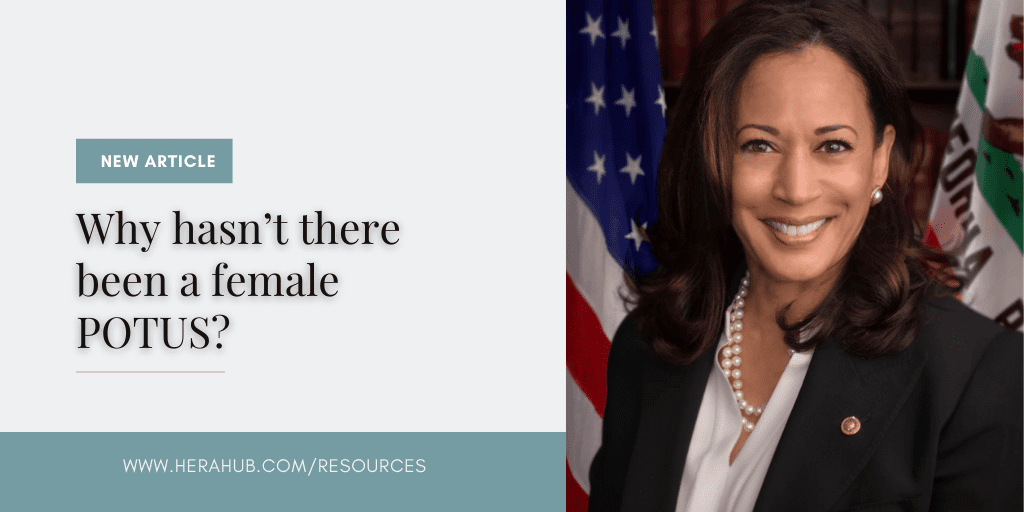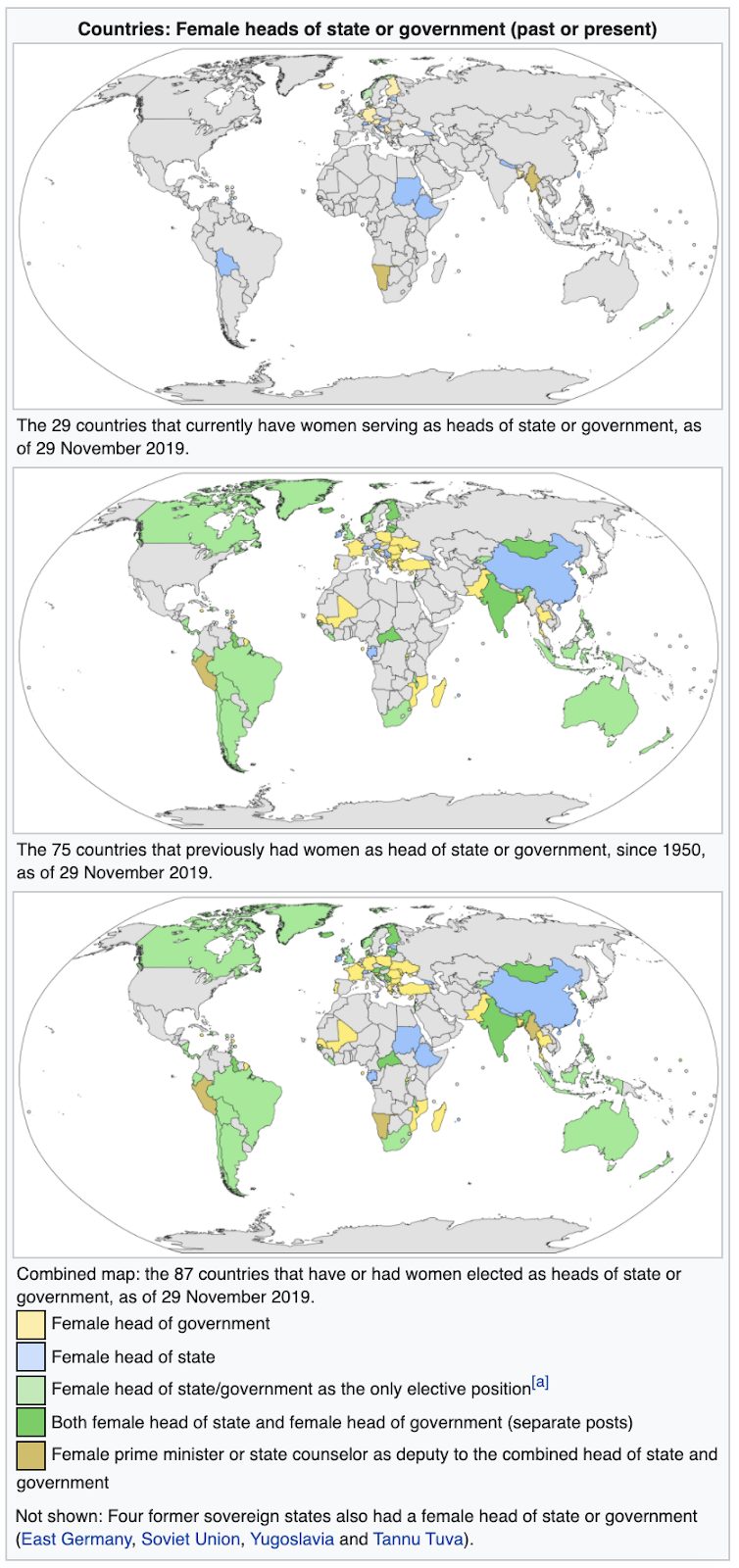
Article by Felena Hanson
A short history of the fight for the oval office
Through the 70s, 80s, and 90s, women in politics underwent the rocky process of teaching the country that they could be equally effective and competent leaders as men, a process that occurred in parallel at workplaces around the country. They dismantled stereotypes and slowly erased the novelty of female decision-makers, at least at the legislative level. Their work is our inheritance. It was only in my lifetime, the past 40 years, that women took a stand to lead and men learned they could be led by women.
Women running for office faced a double bind. They had to appear tough enough to lead, but if they were too tough or too confident, they violated norms around how women were supposed to behave. Our current focus on the presidential race can obscure the fact that women who run for Congress and for governor are just as likely as men to win. The problem is that fewer women are running. Sadly, in many studies, when women were asked if they were qualified for public office, women rated themselves lower than men.
We’ve all been waiting, for what seemed like months, to see Biden’s pick for his VP. Speculation was it would be a woman, and most hoped, a woman of color. In selecting Harris as his running mate, Biden did more than make history by putting a woman of color on a major national ticket, he positioned Harris as the future of the Democratic party.
In a series of tweets, the former vice president called the California senator “a fearless fighter for the little guy, and one of the country’s finest public servants,” noting that she had served as a state attorney general alongside his late son Beau. In a fundraising email to supporters, he called her “smart, tough and ready to lead.” Amen!
Let’s look back into recent history to see the micro-steps of progress
While Hillary Clinton made great strides on the long path toward someday breaking America’s 240-year, 58-election streak of male presidents, she was not the only one.
In 1947, the US had zero female senators, zero female governors. When the women’s liberation movement got up and running in late 60s and in the 70s, early priorities were fighting job discrimination and securing equal rights in the law. During this time, the number of women in Congress barely changed.
Shirley Chisholm was a prominent feminist who created the national women’s political caucus in 1971 with the goal of electing more women to Congress. By 1977, fully half of the countries still agreed with the statement that most men are better suited emotionally for politics than most women.
But the fact was, very little progress had been made since the dawn of the women’s movement. In fact, democratic women had lost seats in the house. For two decades, there was little change in the percentage of Americans who said that they would vote for a female presidential candidate.
In the 1980s women caught up to men in college enrollment and surpassed them in voter turnout rates in presidential elections. But by 1986, the Senate still only had two women, Nancy Kassebaum and Barbara Mikulski, and 98 men. The Democratic party did see a bit of a boost in recruiting women to Congress, when law professor Anita Hill was called to testify about a Supreme court nominee in 1991. The 1992 election brought in 24 women in Congress and four female Senators.
Current Day
In 2020, 26 women (26%) serve in the U.S. Senate (four are women of color) and 101 women (23.2%) serve in the U.S. House of Representatives. Yes, we’ve made progress, but nowhere near 50%.
Canada’s Prime Minister Justin Trudeau is now famous for heading the country’s first gender-equal cabinet. Gender equality, especially when it comes to political empowerment, won’t be a reality for at least another century, according to the World Economic Forum.
While the U.S. may eventually elect a female president, many countries have already beaten America to that milestone.
The highest position of executive power has been held by a woman in 58 countries, since 1960. The first democratically elected female Prime Minister was Sirimavo Bandaranaike of Sri Lanka, who took over the leadership of the Sri Lankan Freedom Party when her husband was assassinated in 1959. Bandaranaike successfully led her party to victory in three elections, in 1960, 1970 and 1994. Constitutional changes in the 1980s meant that her final term as Prime Minister was spent in a more ceremonial role, while the President now held the real executive power (although the President at this time was also a woman; Bandaranaike’s daughter, Chandrika Kumaratunga).
The first woman to serve as president of a country was Isabel Martínez de Perón of Argentina, who as vice-president succeeded to the presidency in 1974 after the death of her husband.
The first woman elected president of a country was Vigdís Finnbogadóttir of Iceland, who won the 1980 presidential election as well as three others to also become the longest-serving non-hereditary female head of state in history (16 years in office).
From the 1940s through the 1960s, Golda Meir worked for the Israeli government in various roles including as Minister of Labor and Foreign Minister. In 1969, party factions appointed her as the country’s fourth Prime Minister, thereby also becoming the world’s third woman with that title. She died in Jerusalem on December 8, 1978.
Sri Lanka is one of just thirteen countries that has had more than one woman in the highest position of executive power, and most of these countries can be found either in the Indian sub-continent or in Northwestern Europe. Of these thirteen, New Zealand and Finland are the only countries to have had three female leaders, including the current Prime Ministers; Jacinda Ardern and Sanna Marin.
So it brings me back to the question…
Why hasn’t the US had a female president? I asked my Facebook community this question and here are some of the comments…
“Long answer: The first thing that would need to change is the ratio of men v women as ceo. From there, women would move into more politics thus climbing the ladder to POTUS. Short answer: women are too smart to want that job.”
“We have become rooted in the past, unwilling to move. Forward, holding back progress has become the way of the US. Not everyone and not in all states, but the general attitude is slow to change.”
“We have a hard time with strong, confident women. In the past it was – women aren’t strong enough – now when we show strength, we’re seen as too polished and insensitive.”
“Until recently, the status quo has been a driving factor in presidencies and we’ve almost always returned to the status quo despite the pendulum maybe temporarily going one way or another around it. The only status quo that remains is our POTUS is a white wealthy male; that should tell us about the power of that particular status quo. We have less equality between men and women than similarly industrialized nations. You see this here with women and ethnic populations; it’s so disparate that Black Americans can not unilaterally make up for the gap between them and white Americans. I believe this contributes to fewer women being elected to public servant positions, as wealth and whiteness goes hand in hand here. Our country was founded by people with religious foundations that disadvantaged women greatly. (I spent a whole two semesters in early American history on these topics, so that’s the short answer.)”
“There are sooo many factors, just a few: Machismo/toxic masculinity results in men whose identity is threatened by strong women. + results in a large contingency of men who subconsciously feel that a woman leader marks the end of the white male advantage. For 50 years certain forces have been stirring up evangelicals, creating a large group who tend to vote on a few, relatively minor issues such as abortion and lgbtq rights – coupled with the fact that electing women is seen as progressive, and therefore women who run for office tend to be progressive… meaning they are unlikely to be against abortion and LGBTQ rights.”
“Politics sucks-a lot. There are fewer women out there willing to stick their neck all the way out onto the chopping block. It’s relentlessly cruel and mostly thankless, and also requires a lot of begging for $.”
“Because we live in a sexist, & misogynistic, society that was established for the benefit of keeping wealthy white men wealthy and in power. The framework of our economy is based on amassing wealth through subjugation of anyone who is not a wealthy white man.It’s fundamental basis is primarily racist, but sexist and misogynistic was thrown in for good measure.”
“Totally by design. I mean that. You go back and read about the Constitutional Convention and how they formed this government and is a study in how to give the appearance of freedom and democracy while actually in function and form keep power centralized in the hands and families of a few (the “Founders”). Do you know how many presidents actually were related to each other? It’s like 90%+ of them. Then add on the disenfranchisement of who can or cannot vote baked into the Constitution and the 200 year plus ONGOING struggle for universal suffrage that still goes on today is it any wonder? Then take into account this year is the 100 anniversary of women’s (white women really) right to vote and that until the 70s/80s in many states women couldn’t get a credit card, get a loan, buy a house, rent an apartment, sit on a jury to say nothing if they were a women of color and is it any wonder?”
“It’s a loaded question. Simply put, socially and psychologically we’ve been conditioned to equate men with strength and power and women with nurture and emotion. I’m not saying I agree with what it’s become, but that’s the state of affairs. World female leaders are wildly successful in some cases but America is still in dinosaur times. That’s my thought but my woman self is screaming for it!”
“Old white men.”
“Because ambitious, smart, outspoken women are considered abrasive and difficult. Men who are ambitious, smart, and outspoken are considered ambitious, smart, and outspoken – and therefore leaders. Second, men still control the lion’s share of political funding and they donate to other men. Running for president costs a great deal of money. Women are far more successful running for election locally and regionally because they don’t need to raise as much money. Make a note how many women serve as mayors for example.”
“System created by white people, specifically wealthy men, to oppress all others. Simple.”
“Such a complicated mix of factors. Mostly sexism I imagine because we have plenty of women in politics who are waaaaaay more qualified and competent than a lot of the men out there. But it’s not just old white dude oppressing women, women oppress themselves too because it’s so ingrained in society that even women often subconsciously view other women as less qualified/confident/competent than a male of similar or even less qualifications. And say things like one of the commenters above “I would vote for a woman if she was the best candidate, but I wouldn’t vote for a woman just because she is a woman.” Even women say that, and it’s often just veiled sexism. ?♀️”
“I don’t think it’s as simple as “society is sexist”. There are many factors in play: in presidential politics, you need to look at how difficult it is to break out of a two-party system–even “regular people” are not readily willing to consider third parties–and then to understand how PACs play a huge role in who will represent each party. I’m not a Trump fan, but people seem to forget that the Republican party / PAC did NOT want him, and that was part of his appeal to Republicans who felt betrayed by their party (i.e., PAC). If you want to understand presidential politics, you need to understand entrenched old dudes that rule the PACs.”
“To put it simply …it’s a man’s world. Now that’s been said, I do believe in the changes that are happening and excited for the changes that are coming. We are in an awakening. This is a very special time but make no mistake, it will be a hard time. There are those who will grab the status quo as if their lives depend on it. What is said is fear has convinced them this is true. It will only happen when enough people get weary enough and let go. Then, light will shine and hope will emerge. The battle between love and fear has existed since well, forever. I will believe always that love will win. A female POTUS is just that, love winning. ❤️??❤️”
Final Thoughts on “First”…
It was exciting to see Hilary Clinton be the first woman to run for president. And it’s exciting to see that Harris reaches closer to possibly being the first woman of color in the White House. Harris’ biography is full of firsts. Born in 1965 in Oakland, Calif. to a Jamaican father and a Tamil Indian mother, she grew up mostly in Berkeley, where she attended a Black Baptist church and a Hindu temple. She went to Howard University, becoming a member of the legendary Black sorority Alpha Kappa Alpha, followed by law school at the University of California, Hastings College of Law in San Francisco. She worked her way up in local district attorneys’ offices before being elected San Francisco District Attorney in 2003. In 2010, she was elected California’s attorney general, becoming the first Black top prosecutor in the state’s history and the first woman to serve in that post. In 2016, she was elected the second Black woman and first Indian-American ever to serve in the U.S. Senate.
While it’s sad to see we are “just” now inching towards our potential “first”… I’ll take it!

Images from
https://en.wikipedia.org/wiki/List_of_elected_and_appointed_female_heads_of_state_and_government





